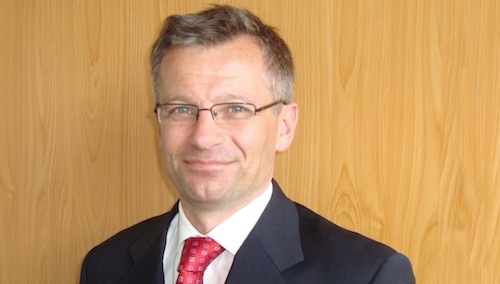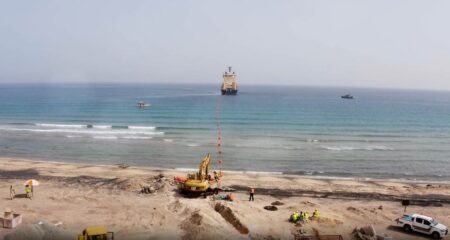
Construction of the East Africa Submarine System (Eassy), the second high-capacity fibre-optic cable along Africa’s east coast, was completed on Monday night, ahead of schedule.
According to the West Indian Ocean Cable Company (WIOCC), the largest shareholder in Eassy, the so-called “final splice” took place at 11.40pm SA time on Monday night.
“The installation phase of the project, which started in Maputo, Mozambique in December 2009, was completed on board the cable-laying vessel Ile de Batz in the Indian Ocean, just off the east African coast,” the WIOCC said in a statement posted to its website.
“Now that this critical stage of the project has been completed successfully and ahead of time, we will start system testing almost immediately,” says WIOCC CEO Chris Wood (pictured).
“Once this is finalised, we are looking forward to connecting our first customers to the network from July 2010.”
Eassy is the second cable system to connect the region, after the successful deployment in 2009 of the Seacom cable system.
Shareholders in the WIOCC are the Botswana Telecommunications Corp, TelOne of Zimbabwe, the Libyan Post, Telecom and IT Company, Dalkom Somalia, Djibouti Telecom, Gilat Satcom Nigeria, the Seychelles government, the Lesotho Telecommunications Authority, Onatel Burundi, Telkom Kenya, TDM Mozambique, U-Com Burundi, Uganda Telecom and Zantel Tanzania.
The company has begun touting the advantages of Eassy over Seacom ahead of commercial switch-on.
“A key difference between Eassy and other sub-Saharan systems is that our system will deliver connectivity to Europe via a direct route through the Red Sea and the Mediterranean Sea”, says WIOCC chief technology officer Ryan Sher, who is also chairman of the system’s technical working group.
“Eassy will be the first east coast system to connect directly to Europe, minimising the time taken for traffic from Africa to reach the key Internet peering points in Europe and North America,” Sher says.
“With the vast majority of international traffic being Internet-based, and with most African traffic destined for Europe and the US where the most popular content and applications are located, our ability to deliver content faster gives us and our customers a competitive edge in the market.
“Other east coast systems use longer routes via the Middle East or India; our optimised routing means that we are able to offer the lowest latency service to our customers,” Sher says.
Capacity on the cable will be available in increments from as little as 2Mbit/s up to multiple gigabit/s wavelengths. — Staff reporter, TechCentral
- Image credit: WIOCC
- Subscribe to our free daily newsletter
- Follow us on Twitter or on Facebook




